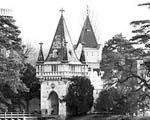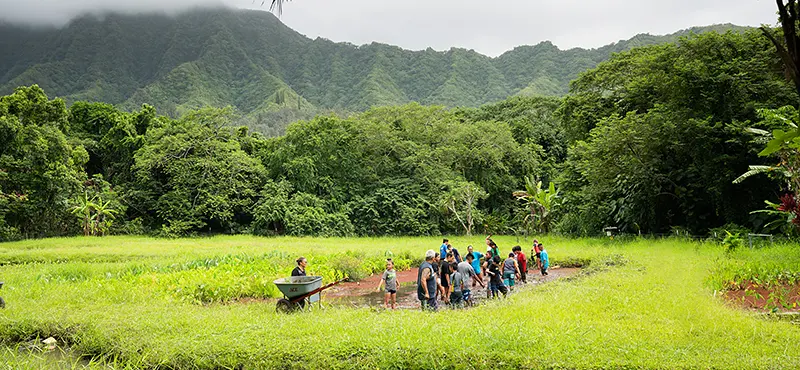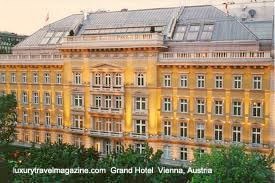Pauahi’s European Travel Journal 1875-1876
Austria
Sources: Pauahi by George Kanahele, Chapter 5: Revelations of an Odyssey
Student transcriptions from Ka Moi, 1935-37
Transcriptions of Dani Gardner, KSG 1961
Please cite: Kamehameha Schools Archives when using information from this website
Disclaimer: all images of Europe are from the Internet to enhance the text
Vienna, [Austria] Saturday 27
We have just returned from the opera very tired and sleepy, as we had but little sleep last night, having traveled all night from Munich and arrived about 7 o’clock this a.m.—an hour [and much] behind time. At the station the porter from the “Hotel Grand” met us with a carriage, took charge of our luggage, and drove to the hotel. The Countess Bombellas, having spoken to them about us, expedited matters very much. I stayed indoors the whole day and tried to mend up our much used wardrobe. Hearing that the opera of the “La Prophete” was to be performed this evening, Countess Bombellas spoke to the porter to procure us tickets, which he did. We have had a splendid time—the music excellent as well as the acting—the scene very beautiful in two scenes. A skating party was introduced. Ladies and gentlemen were dressed in Polish costumes and a ballet given—opera house superb.
Sunday 28
This morning Mr. Schonberger, our consul, called to see us and kindly offered his services, to go about with us and show us Vienna. We gladly accepted, so we sallied forth to the Augustine church near the imperial palace. The service was going on—people in crowds going in and coming out—the singing excellent. In this church is a superb monument by Canova in marble of Archduchess Maria Christina, daughter of Maria Theresa. We next went to St. Michel church and then to the metropolitan church of St. Stephen, a very old but splendid structure. There was quite a crowd in the church, the whole congregation all joining in the singing, the service being in honor of the deceased cardinal who was buried only the day before, and whose catafalque was then lying in the nave of the church draped in black velvet with the arms of the deceased cardinal embroidered all over it. Everybody stood up during all this time and seemed much interested in the service and in the singing. We walked through several of the principal streets and back to our hotel.
This evening we went to an instrumental concert given by the far famed Strauss band at the concert room, a very handsome room with rows of figures of women holding up the galleries on their heads. The building was crowded to suffocation. I forgot to mention that in the afternoon that the Ring Strauss [Ringstrasse] on which the “Grand Hotel” stands was crowded with well dressed promenaders of both sexes. As our room looks right on the street, we had a fine opportunity of looking in on the Viennese, as they walked up and down and staring at each other—carriages with coachmen in livery dashed by, up and down. The scene was gay and brilliant.
Monday 29
Today Mrs. Schonberger called. She is very pretty and sweet and seems good tempered. We all walked to a small picture gallery near by. After an hour she went home to the children while we went to another building, but found it closed so came home. In the evening we went with Mrs. [Mr.] Schonberger to the operetta at another theatre. It was very good.
Tuesday 30
Visited today first the Austrian Museum of Art and Industry, a collection of ancient and modern works of all kinds in gold, silver, iron, jewelry, glass, laces, and embroidery [embroideries and all kinds of fabric], several cases containing curiosities belonging to the King of Hanover—thence to the Treasury, a rich and superb collection of jewels, belonging to the Emperor and Empress, and royal families. The two crowns, covered with diamonds, rubies and pearls of large size, belong to the state. There were diamond crosses and strings of diamonds as well as things of pearls and cornets of diamonds and emeralds, rubies, with earrings, brooches, bracelets, and stomachers to match. The orders of the Golden Fleece, Francis Joseph and Maria Theresa and many other magnificent ornaments, too numerous to mention. Afterwards drove to the Royal Stables, but found it not the day for public inspection—thence to the Belvedere, where we spent the rest of the day. This building was once an imperial chateau built by Prince Eugene of Savoy, and once his residence, now used as a picture gallery. There are several very large paintings by Rubens in this large collection and the best I ever have seen of his work.
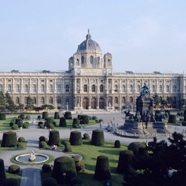
Wednesday 1
I have had today my first and probably my last sleigh ride and enjoyed it exceedingly. Mr. Schonberger had made all preparations for the ride; procured fur coats and fur bags [rugs] and shoes for the feet. At 11 o’clock we drove to the hotel and with him came Mr. Latray [Lahay], one of the Donau officers we had known at home, and we drove out in a two-seater [seated] sleigh to the Emperor’s summer palace of Lazenberg [Laxenburg], a distance of about 10 miles from Vienna. It was bitterly cold, but we were well wrapped up and so did not mind it much. We put up at an inn (not [but] of the very cleanest) and Mr. Schonberger ordered breakfast for us after the long ride in the cold which gave us a sharp appetite and we did justice to the breakfast, after which we walked over to the palace about two minutes’ walk from the inn. It is an unpretending looking building from the outside. The interior is neat and in good taste, not at all gorgeous. The imperial apartments took up two sides of a square (there being an open court in the centre).
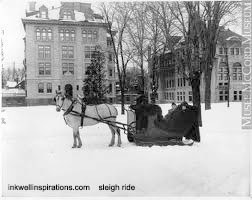
Wednesday 1
The walls of all the rooms with the exception of the reception room were covered with wall paper in bouquet pattern, each room being different, with furniture(s) to match. They looked very simple and home like. The lower state apartments were larger and more elegant and hanging with portraits of ancestors and [of] the emperors. The pictures [portraits] of Maria Theresa, Francis (I), her husband, and Joseph II, their son, (being) repeated in every room. From this palace, we walked through the park in the snow to the old chateau four hundred years old, a distance of a mile, built by one of the former emperors in imitation of one in the Tyrol. It is very interesting, its castle filled with many antique relics—antique wood carvings, and antique furniture—all full of memories of past generations. In a rotunda of the chateau, arranged along the wall are life sized marble statues of the emperor of the house of Hapsburg and of Maria Theresa. [austria-laxenburg] The embroidery [embroideries] on the drapery was [were] finely executed in marble. The last room we visited was in old times used as a dungeon. The only occupant of the place is a stuffed wolf killed only a few years ago in the park, and the other was a wooden figure of a man, representing a man chained by the wrist to the wall. He wore a gown and a cowl, and as we stood looking at this horrid figure, the castellan moved a spring and the figure chained flew up rattling the chain and frightened me very much for the moment, although I was told before hand that there would be something of the kind done. The gentlemen were amused at my nervousness. We retraced our steps back to the inn, mounted the sleigh and away we went back to the city—the horses feeling fine and the bells jingling merrily as we rattled on—but it was long after dark when we got back to the hotel although it was only five o’clock. Charles and Mr. Latray [Lahay] went in to dinner, but I immediately went to dress for the ballet at the opera house. At 6 o’clock Mr. Latray [S.] came back (we left him at his house on the way) and we walked over to the opera house—spent a most delightful evening. The dancing was most wonderful. The dresses of the girls were [varied and] all very beautiful. There must have been nearly, if not quite 200 girls, large and small, who took part in the play and in the dancing. The older girls were all very handsome. The scenery in the last tableau was the [most beautiful and grand] grandest I ever saw.

